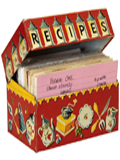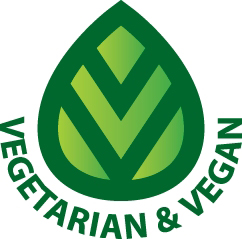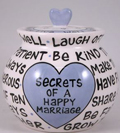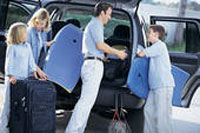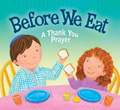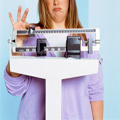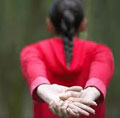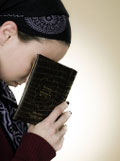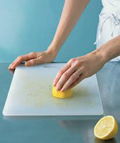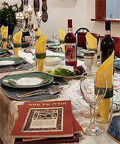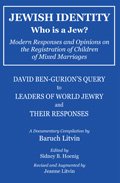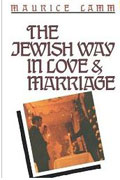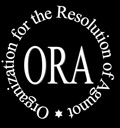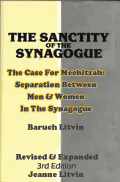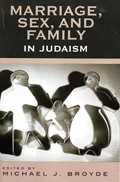PREP YOUR HOME FOR PASSOVER
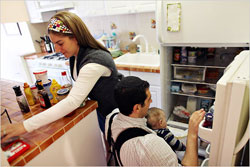
Page 1
PRE-PASSOVER CLEANING
Chametz refers to any foods not allowed on Passover
- Every home should be thoroughly cleaned during the week before Passover
- All rugs & carpeting need to be thoroughly cleaned with a vacuum
- All furniture that has cushions needs to be thoroughly cleaned with a vacuum
- All closets, cabinets, desk drawers, knapsacks & other places in which you may expect
to find chametz should be carefully checked - Your place of work & your vehicles should also be clear of chametz
- Even the pockets of your clothes should emptied out, searched & cleaned
HOW TO KASHER YOUR KITCHEN FOR PASSOVER
The prohibition against the use of chametz during Passover is absolute
- The tiniest quantity of chametz "contaminates" utensils and food with which it comes into contact.
- Chametz is never ok even if you have Passover foods mixed in with it
- For this reason, even the taste of chametz which has been absorbed into the surfaces of utensils, tabletops, counters & appliances must be removed by a process of kashering.
Some utensils can't be thoroughly cleaned & therefore can't be kashered
- If they contain many tiny holes from which every speck of food can't be physically removed like sieves, strainers, graters & grinders, they can NOT be kashered effectively.
- If they contain even the tiniest cracks in which minute particles of chametz may be lodged, they can't be processed for Passover use & that is why wooden items can NOT be kashered.
- Utensils made from china, earthenware & porcelain can NOT be kashered.
- Enamel is similar to china & earthenware so it can NOT kashered.
- Teflon utensils & Formica surfaces can NOT be kashered for Passover
May be kashered
- Stone
- Metal
- Natural rubber
- Corning Ware
- Corelle
- Pyrex vessels
- Glass
KASHERING METHODS
- The kashering process is based on the principle that as a substance is absorbed into a vessel, so is it expelled
- The method to be employed will depend upon how the utensil was used, whether hot or cold, on or off the source of heat, with or without liquid
- Regardless of the specific procedure to be employed, the utensil should be thoroughly cleansed, food, dirt & rust removed and then set-aside for 24 hours before kashering
- Consult your Rabbi for the time that kashering should be completed.
DIPPING (HAG'ALAH)
If the utensil was used with hot liquid, it should be kashered by dipping (Hag’alah)
- A large pot should be completely filled with water.
- The water should be heated until it boils, that is, until large bubbles appear
(212°F, 100°C). - To make certain that the rim of the pot is kashered, a hot stone or piece of metal is
introduced into the boiling water, causing it to overflow. - Smaller utensils can be kashered in this pot only if the volume of the pot & the
boiling water it contains exceeds the volume of chametz they have absorbed
by at least sixty%. - They should be placed in a perforated basket or net & immersed into the boiling water
for a few seconds, shaking the net or basket to allow the water to completely envelop each
item. - The utensils should then be rinsed with cold water.
- The pot used for kashering other vessels should itself be kashered
again afterwards
in order to be used for Passover
POURING (IRU'I)
If the vessel is too large to be kashered by dipping (Hag'alah)
& if it absorbed the chametz as a result of hot liquid being poured
into or onto it, as in the case of metal tables, counter tops & sinks,
it is kashered by pouring (Iru'i)
- Heat a pot of water on the fire.
- Heat a stone or piece of metal on the fire.
- Pour boiling water over the entire surface to be kashered, while simultaneously moving the stone or metal over the surface by holding it with tongs or pliers.
- Rinse the kashered surface with cold water.
SOAKING (MILU'I VE-IRU'I)
This method is used for kashering glassware that was mainly used with cold liquids
- Clean your glasses & let them sit for 24 hours
- You will be submerging your glasses in either a large bathtub or large new plastic garbage tub
filled with cold water
1. Submerge the glasses in the cold water for 24 hours
2. Change the water & soak for another 24 hours
3. Change the water & soak for another 24 hours
BURNING (LIBBUN)
This method of kashering is appropriate for articles used for
cooking, frying, broiling, baking & grilling
directly on the source of heat without any liquids
It differs from dipping (Hag'alah) in that it
destroys the chametz rather than merely expelling it
- The vessel should be cleaned
- No waiting period is required after its last use with chametz
- It should be heated to glow with a blowtorch
- Charcoal will achieve the same effect as a blowtorch
- Even where dipping (Hag'alah) alone generally suffices for some utensils,
burning (Libbun) may also need to be applied to cracks, crevices, latches, hinges, etc.
where chametz may have penetrated
KITCHEN SURFACES & APPLIANCES
- Formica tops can NOT be kashered for Pesach but should be washed & covered with new
plastic mats, contact paper or foil - Wooden tables & counters should be cleaned & covered with new plastic mats or foil
- Shelves used for storing food, dishes & silverware should be thoroughly cleaned & covered
with contact paper or foil - Special care should be taken to wash children's highchairs especially in the cracks & crevices
- The food surfaces on the high chair should be covered with contact paper or a couple layers
of foil
REFRIGERATORS
- Wash thoroughly
- Cover surfaces on which food is stored with aluminum foil
- Small holes can be made to allow for free flow of cold air
SINKS
- Clean thoroughly
- Spout covers containing a strainer & strainer-like drain covers (which cannot be
thoroughly cleaned) should be removed until after Passover is over - A drain cleaner should be used.
- Do NOT use the sink with hot water for 24 hours
- Then turn the hot faucet to its maximum for a few minutes
- Having cleansed the faucets and spouts, use pouring (Iiru’i) over the entire surface of the
sink & over the faucets. - The crevice around the drain may be cleansed with light burning (Libun)if it can't be
cleaned thoroughly - It is advisable to use an insert (tub) in kitchen sinks for Passover
- Bathroom sinks are not used for food & need not be kashered but they should be thoroughly cleaned
- After being washed, toothbrush holders should be covered & all year-round toothbrushes should be put away after your last chametz meal
FOOD PROCESSORS, MIXERS & BLENDERS
- Those used for mixing dough & other actual chametz foods can only be kashered by
dismantling the metal parts which may have made contact with chametz & then subjecting
them to light burning (Libbun). - If they were used only for fruit and vegetables, dipping (Hag'alah) may be used
- A glass jar (or Pyrex or plastic) can be subjected to dipping (Hag'alah).
- The blades should be thoroughly cleansed and subjected to dipping (Hag'alah)
or light burning (Libun) - The motor base should be thoroughly cleansed of chametz & may then be used.
- The holes in the grinder attachment require strong libbun, even after careful cleansing
♦♦♦♦♦
♦♦♦♦♦
Return to Passover At Home Directory
♦♦♦♦♦
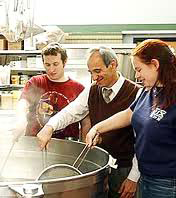
Copyright © 2012 - 2017 KosherWoman.com
All rights reserved


